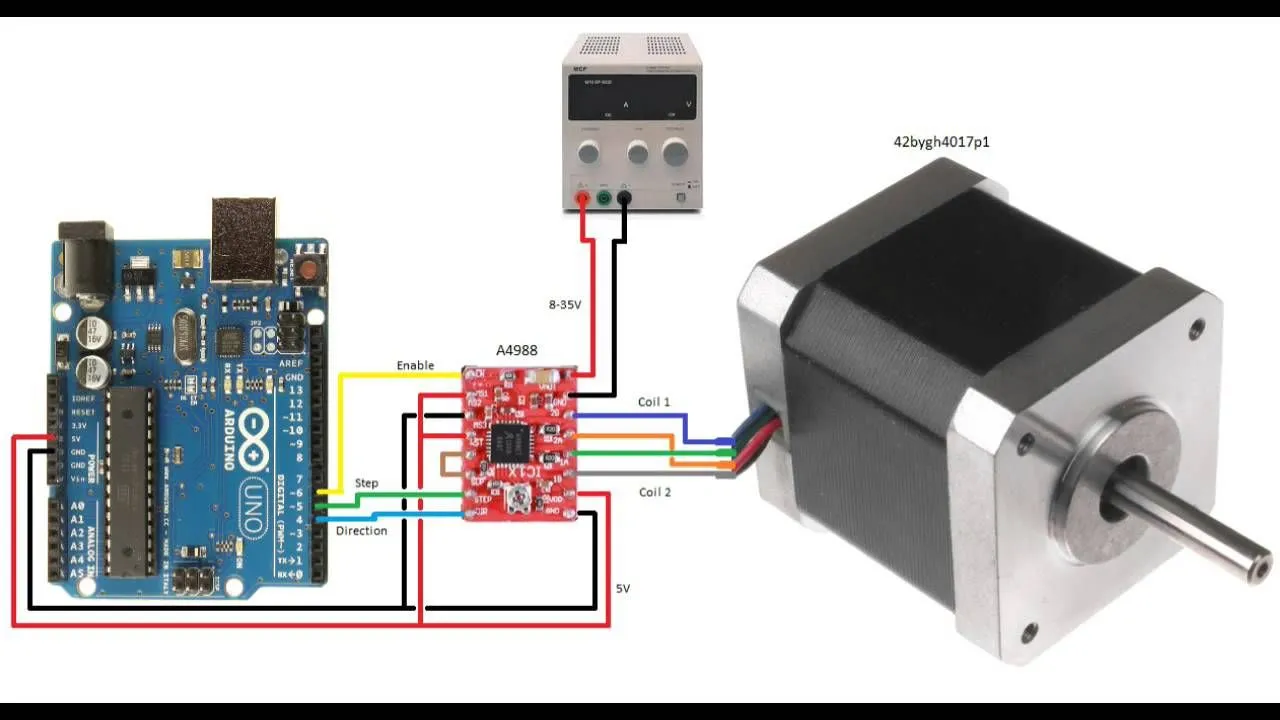Analysis of stepper motor driving methods
2024-01-26 15:42:04
Stepper motors are widely used in various industries and applications, from robotics to CNC machines. They offer precise control and positioning, making them an essential component in many automated systems. However, the performance and characteristics of stepper motors heavily depend on the driving method used. In this article, we will explore the importance of stepper motors, analyze five different driving methods, and discuss their advantages and disadvantages.

Importance of Stepper Motors
Stepper motors play a crucial role in many industries due to their ability to provide accurate and repeatable motion control. They are widely used in applications that require precise positioning, such as 3D printers, robotic arms, and automated machinery. Stepper motors offer a cost-effective solution for controlling motion, making them a popular choice in both industrial and consumer electronics.
Analysis of Five Stepper Motor Driving Methods
1. Constant Voltage Drive
The constant voltage drive method is one of the simplest and most straightforward ways to drive a stepper motor. It involves applying a constant voltage across the motor windings to produce motion. While this method is easy to implement, it has some drawbacks. The motor tends to operate at low speeds, leading to high vibration and heat generation. Additionally, constant voltage drive is not commonly used in modern applications due to its limitations.
2. High-Low Voltage Drive
The high-low voltage drive method improves upon the constant voltage drive by alternating between high and low voltages to reduce vibration and noise. It also introduces micro-stepping control, which allows for smoother motion and increased resolution. However, the high-low voltage drive method has its challenges. The circuit becomes more complex, and heat generation becomes a significant concern. Similar to constant voltage drive, this method is not commonly used in modern applications.
3. Self-Excited Constant Current Chopper Drive
The self-excited constant current chopper drive method is a significant improvement over the previous two methods. It reduces noise and vibration while improving the motor's speed performance. This method achieves precise control by regulating the motor current. However, the self-excited constant current chopper drive requires a more sophisticated circuit design and performance requirements. It can also lead to high-frequency interference, making it less desirable in certain applications.
4. Current Comparison Chopper Drive (Market-Dominant Technology)
The current comparison chopper drive is currently the market-dominant driving method for stepper motors. It simulates sinusoidal wave control, resulting in improved performance, lower speed, and reduced noise. This method also allows for higher resolution and smoother motion. However, it comes with its own set of challenges. The circuit becomes more complex, and high-frequency interference can occur. Moreover, heat generation and component aging are concerns that need to be addressed.
5. Submerged Drive
The submerged drive is a relatively new technology that overcomes some of the limitations of the current comparison chopper drive method. It minimizes heat generation and extends the lifespan of the stepper motor. The submerged drive provides a more efficient and reliable solution, making it attractive for certain applications. However, it comes with a higher cost and strict matching requirements, limiting its widespread adoption.
Conclusion
Choosing the right driving method for a stepper motor is crucial to achieving optimal performance and efficiency. Each driving method has its own advantages and disadvantages, and the choice depends on the specific requirements of the application. While the current comparison chopper drive remains the market-dominant technology, the emerging submerged drive shows promise for overcoming existing limitations. As technology continues to advance, it is essential to stay informed about the latest driving methods and their potential impact on stepper motor applications.
See What Lunyee Can Do For You
Contact Us
- 8619149417743
- +86-0371-5562 0274
- [email protected]
- Zhengzhou, Henan Province, China
- Mon-Fri: 9:00 - 18:00




